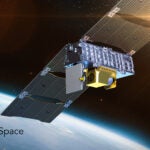
The head of the Missile Defense Agency (MDA) said he was confident the agency could keep the Redesigned Kill Vehicle (RKV) program on track after the top Democrat of the powerful Senate Appropriations defense subcommittee called its acquisition strategy into question on Wednesday.Under the current strategy, the government leads the RKV design effort, with Raytheon [RTN], Lockheed Martin [LMT] and Boeing [BA] all designing and integrating specific components."From the outside, it looks like you're taking three defense contractors that might…













